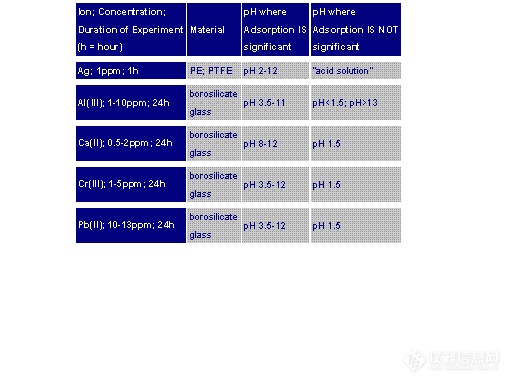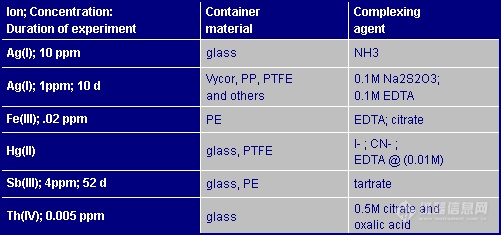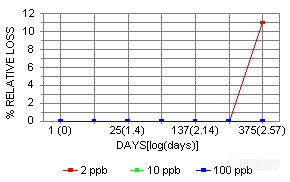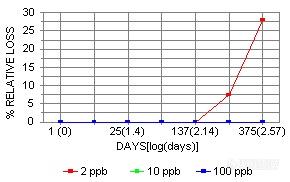PPB Stability Study:
An adsorption test was conducted at IV in an attempt to better understand the stability of mixed element solutions at the ppb concentration level in low density polyethylene (LDPE) bottles. The stability of metals at the ppb level in this container material was of significant concern.
- Experimental Design -
A blend of 65 elements from Inorganic Ventures / IV Labs' CMS-SET was prepared at the 0, 2, 10, and 100 ppb concentration level in 1 % (v/v) HNO3 at the start of the study.
The set consists of the following;
CMS-1 - 10 礸/mL Ce, Dy, Er, Eu, Gd, Ho, La, Lu, Nd, Pr, Sm, Sc, Tb, Th, Tm, U, Yb, Y in 3.5 % HNO3
CMS-2 - 10 礸/mL Au, Ir, Pd, Pt, Re, Rh, Ru, and Te in 3.5 % HCl
CMS-3 - 10 礸/mL Ge, Hf, Mo, Nb, Ta, Sn, Ti, W, and Zr in 3.5 % HNO3 tr. HF
CMS-4 - 10 礸/mL Sb, As, Ba, Be, Bi, B, Cd, Ga, In, Pb, Se, Tl, and V in 3.5 % HNO3
CMS-5 - 10 礸/mL Ag, Al, Ca, Cs, Cr+3, Co, Cu, Fe, Li, Mg, Mn, Ni, K, Rb, Na, Sr, and Zn in 3.5 % HNO3
Only LDPE bottles (500 mL) were used.
The LDPE bottles were acid leached with 1% nitric acid for 59 hours at 60 °C. New blends prepared in the same way were compared to the original preparation at 1, 3, 25, 75, 137, 300, and 375 days.
The New blends were compared to the original blend using
ICP-MS and the relative % loss was calculated.
The
ICP-MS used is in a clean room limiting environmental contamination (opened 1 % nitric acid solutions in similar LDPE bottles placed around the auto-sampler yielded no detectable environmental contamination at times of ~ 100 hours).
Measurements of each blend were made in the same LDPE bottle i.e. the blend was not exposed to any other container during the study.




